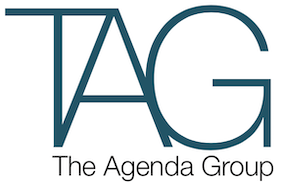Last Thursday, as Victorians were cleaning up after the previous night’s flash flooding and thunderstorms, a report was quietly released that looks set to form the basis of the Victorian Government’s economic agenda.
The Victorian Competition and Efficiency Commission, or VCEC, released its draft report into a State-based reform agenda following a formal inquiry that Treasurer Kim Wells requested back in April.
Securing Victoria’s Future Prosperity: A Reform Agenda is available for public comment until December 16 at www.vcec.vic.gov.au.
When he announced the inquiry, Mr Wells said it would identify regulatory reform priorities in areas such as state taxes and regulation, infrastructure, and education and skills.
In recent months , most particularly via the state budget, Government has placed a lot of stock in the VCEC inquiry as a – or perhaps even the – key component of its economic strategy.
Mr Wells has criticised the previous government for Victoria’s decline in productivity observed over the past decade and, in response, referred to his government’s “clear plan” to “repair Victoria’s finances”.
This “clear plan” is outlined in the 198-page VCEC document containing 26 draft recommendations. And when the report is finalised, it seems likely the Government will commit to all or most of its recommendations in order to realise its own economic plan.
While VCEC found that Victoria was already doing well – ranking it as the most competitive overall jurisdiction in Australia – the inquiry nevertheless recommended a number of sensible economic reform strategies that will enhance productivity by an estimated $7.5 billion.
However, as many governments will attest (just take a look at David Cameron’s NHS reforms in the United Kingdom as a recent example), reform is a difficult thing to sell. For example, when in opposition, the Coalition regularly criticised the size of land tax bills. However, the VCEC report effectively recommends replacing inefficient taxes – such as stamp duties – with higher, more efficient, taxes – including land tax and payroll tax.
Increasing the land tax and payroll tax burden will not be popular, and it will be fascinating to see how the government manages this political hot potato (the government has recently managed a very successful u-turn from its opposition to on speed cameras, so perhaps anything is possible).
Other reforms outlined in the draft report include:
- A shake up in the skills sector – including implementing a workforces skill strategy and corporatising TAFEs.
- Improving the school system by moving to an outcomes-focused system; improving the quality of teachers (and their remuneration), and evaluating the role of childhood development.
- Improving innovation by enhancing links between industry and the research sector.
- Increasing innovation throughout the Victorian public sector.
- Improving the regulatory regime – including potentially reducing the number of regulators from the current 68.
- Reforming regulatory impact statements.
- Improving efficiency in transport and alternative ways to fund transport.
- Strengthening links between regional Victoria and Melbourne.
- Optimising Victoria’s urban water supplies. This includes clarifying water sources- potentially utilising storm water and recycled water as sources.
- Responding to declining energy sector productivity by calling for a national review.
- Looking at the role of the NBN in Victoria- which VCEC argue is a productivity improver.
Given the likely significance of this report, stakeholders with an interest in any of the above areas would be well advised to familiarise themselves with the recommendations and make sure their views are heard by the looming deadline, now only about a month away.
